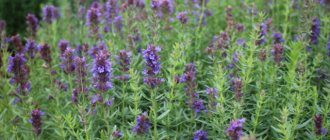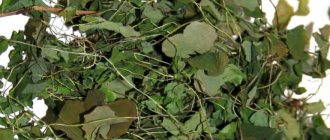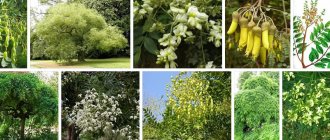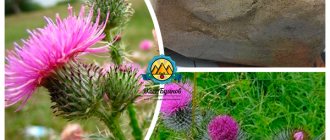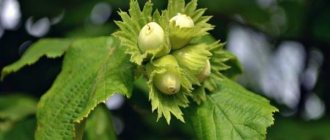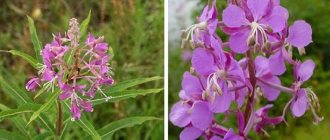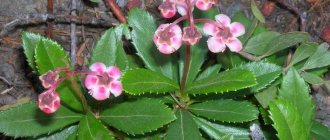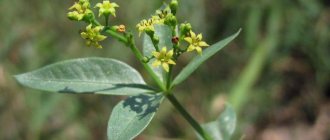Prickly tartar is a widespread weed, very prickly herbaceous plant. It stands out for its impressive height, up to 250 cm. It belongs to the genus Onopordum of the Asteraceae or Compositae family.
As a medicinal plant, tartar has been used to treat diseases of the heart, respiratory system, bladder, liver, skin diseases, etc. It has proven itself well for normalizing the activity of the central nervous system, and is a tonic for overwork.
The anti-cancer medicinal properties of the prickly tartar are widely known, recognized not only by folk medicine, but also by official medicine, which are used both for treatment and for prevention purposes.
Strange as it may seem, but with its exceptional thorniness, the plant is edible. Tatar grass (young shoots and leaves) is of interest to fans of green cooking. Only young plants are suitable for these purposes, which are collected in early spring until they reach a height of 20 cm. Soups, borscht, salads, filling for pies and pies, and seasoning are prepared from the herbaceous part.
The roots of annual plants are also suitable for nutrition. In the Caucasus, there are recipes for preparing prickly root tartar in boiled and baked form. They serve as raw materials for the production of starch and are used in the form of flour and cereals.
Tartar is valuable as a honey plant: during flowering in July-August, the plant produces a lot of nectar.
Types and varieties
The genus Tatarnik, in addition to the species of spiny Tatarnik, consists of more than 40 species, among which:
- fine-scaled tartar (onopordum fine-scaled) – Onopordum leptolepis DC.;
- tauride tartar (onopordum tauricum) – Onopordum tauricum Willd.;
- Onopordum acaulon L.,
- Onopordum bracteatum Boiss. & Heldr. and etc.
Tatar prickly (budjak), milk thistle, application
Thistle, thistle, thistle, thistle, thistle, thistle, thistle, etc. In total there are about 120 species of thistle: thistle is spiny, sea, curly, drooping, small-headed, Termer's thistle, giant artichoke is also a thistle , milk thistle (milk thistle), etc. Due to the many species and external similarity, they are often confused in names and the word thistle loses its individuality and acquires a general meaning.
prickly tartar, rosewort, milk thistle
The thistle is a symbol of Scotland. This plant is not simple, it has an interesting legend and history. On the one hand, thistle is a thorny herbaceous plant, a weed with which many constantly struggle, and on the other hand, it is a highly revered plant, which is depicted on the coat of arms of Scotland and is their symbol. The knightly order “Thistle” is named after the thistle. The motto of the order is: no one will touch me with impunity.
They say that behind its thorns hides a vulnerable soul, capable of self-sacrifice and mutual assistance. In Christian symbolism, its thorns symbolize the torment of Jesus Christ, as well as sin, malice encroaching on virtue (Job, 31). This plant was used in religious rituals as a herb capable of driving away evil spirits and evil in general.
Similar species
When studying the properties of prickly tartar, collecting and preparing its parts, and especially when treating with this plant, you should definitely pay attention to a very important point. One of the popular names for the prickly tartar is thistle. However, this is what people call not only this plant, but also others. However, not all of them belong to the aster family.
- Milk thistle (Silybum marianum) is a genus of milk thistle (Silybum) of the Asteraceae family.
- Blessed Knikus (Benedictine), Benedict (Centaurea benedicta, Cnicus benedictus) is a genus of cornflower (Centaurea) of the Aster family.
- Eryngium flat-leaved, flat-leaved eryngium (Eryngium planum) is a genus of eryngium (Eryngium) of the umbrella family (Umbelliferae).
In addition, there is a genus of plants, the scientific name of which is thistle (Carduus), belonging to the Asteraceae family, which includes 130 species, including:
- prickly thistle (spinous, acanthoid, acanthofolia) – Carduus acanthoides;
- curly thistle – Carduus crispus;
- drooping thistle (drooping) – Carduus nutans L. and others.
To avoid this confusion, distinguish the prickly tartar of similar species and buy the right, necessary plant, the surest way out is to be guided by the Latin name.
Prickly tartar. Latin name : Onopordum acanthium L.
Prickly tartar. Other names : common tartar, tartar, tartar, rosebud, thistle, gill-grass, sow thistle.
Tatar honey: beneficial properties and contraindications
Everyone is well aware of the healing properties of honey. However, all its varieties can be useful in their own way, since it depends on the plant that serves as a honey plant. Undoubtedly, honey exhibits the same properties that the corresponding plant has. Among the latter there are quite a few medicinal ones that bring great benefits to people.
Probably not everyone knows about the honey plant called milk thistle? Honey, the beneficial properties of which are familiar to everyone, it turns out, can also be milk thistle.
At first glance, this plant is unsightly, resembling a thistle. However, it is known that milk thistle has been used for many centuries to treat a wide variety of diseases and ailments. And now, based on this plant, magical tinctures and decoctions are prepared that help in the treatment of the liver and kidneys, diseases associated with the gastrointestinal tract, and much more. etc. This plant also imparts its amazing healing qualities to honey.
After reading this article, you can learn in more detail about many interesting things related to honey, in the creation of which a not very remarkable plant with a slightly funny name “milk thistle” takes part.
Milk thistle honey: general information
Milk thistle honey is one of the high-grade honey produced by bees from the nectar of the plant, which has excellent medicinal properties. This variety of beekeeping product contains a huge amount of vitamins and various minerals.
This honey has shades from light yellow to beautiful rich amber. Its peculiarity is that it quickly crystallizes. In this case, it takes on a light cream color. It tastes pleasant, with a rather delicate aroma, and its consistency is soft, with barely perceptible small crystals.
Milk thistle is diverse and rich in medicinal properties. Honey has absorbed from it so much that is necessary for human health that it is impossible to describe it in a few words. First, let's dwell a little on the plant itself.
Flower of Healing
What is this miraculous flower - milk thistle (milk thistle)? Some names of this plant mention the name Mary (implying the Mother of God).
According to one legend, this plant was given to people by the Mother of God, and the white spots on its leaves are nothing more than Mary’s spilled milk.
As if it was she who made people understand that this flower has medicinal value.
It should also be noted that in many European languages the name of milk thistle also mentions the name of the Mother of God. For example, Bulgarians call it “the gift of the Virgin Mary” (literal translation). And the proper Latin name of the genus means “tassel of the Mother of God.”
Milk thistle is native to the Balkans, the Iberian Peninsula and the Mediterranean. Today the plant is widespread throughout the world. You can meet it in Europe (in the east and west), in Central Asia, in Central and Southern Africa, in South and North America.
It is known that the plant has been used by people as a medicinal plant for more than 2000 years. This is what it is - milk thistle. Honey, benefits and harms, composition, properties of this bee product will be described below.
Description of milk thistle
Milk thistle is an annual herbaceous plant (Asteraceae family) or one of the species of the famous thistle. Popularly it has several names: thistle, thorn, silver tartar, milk thistle.
This is a very thorny plant that grows up to 2 meters in height. From July to August it blooms with bright purple flowers sitting in baskets. The plant is quite unpretentious, but does not really like temperatures below 10 degrees, and therefore belongs to the south.
A magnificent magical plant is milk thistle. Honey, whose properties are surprisingly healing, has absorbed everything important and useful that is in this, albeit inconspicuous-looking plant.
Since ancient times, its flowers and fruits have been used as raw materials for various potions in folk medicine. Milk thistle is widely used in the manufacture of drugs for heart medications, blood pressure, and many others. etc.
Plant properties
Milk thistle has a huge number of benefits. Honey, whose medicinal properties are phenomenal, contains many microelements that are part of the plant.
The properties of honey (medicinal) are associated with the content of the following beneficial substances in milk thistle: macroelements (potassium, iron, calcium, magnesium), vitamins B1, B3, K, E, D, microelements (iodine, chromium, manganese, boron, copper, zinc, selenium, phosphorus, aluminum) and many others. etc.
Now we know what the milk thistle plant is. Honey, its beneficial properties and contraindications will be presented further.
What does milk thistle honey treat?
Eating milk thistle honey can bring many benefits for the following ailments:
• diseases of the circulatory system (promotes an increase in the number of platelets in the blood plasma);
• metabolic disease;
• diseases of the gallbladder, liver (promotes the outflow of bile and strengthens the protective function of the liver);
• nervous system disorders (helps with insomnia and relieves feelings of restlessness and anxiety);
• hypertension (normalizes blood pressure);
• radiculitis and other joint pain.
Honey also helps improve digestion and strengthens the immune system.
This tandem (milk thistle, honey), the beneficial properties of which are phenomenal, has another important “specialization” - the treatment of constipation. And most importantly, milk thistle honey is effective in the treatment of ulcers and gastritis of the stomach, as it easily copes with the healing of wounds in the inner walls of the stomach.
Contraindications
Milk thistle and honey are a great combination. But, like any drugs, they should be taken on the recommendation of a doctor, especially if you have any chronic diseases. However, there are no particularly serious restrictions.
Let's introduce some of them:
1. During the process of cleansing the liver with this remedy, side pain and diarrhea may appear. It should be noted that if this lasts more than 2 days, then you just need to stop taking the drug.
2. For gallstone disease, you need to start taking it with very small doses.
3. Milk thistle is contraindicated in mental illnesses, for example, in the presence of epilepsy or depression.
4. Quite rare, but still can lead to disruption of the heart valve, taking milk thistle if a person has cardiovascular diseases. This is due to the considerable content of phosphorus and calcium in the plant.
5. Should not be taken if you have asthma or shortness of breath.
6. There may also be individual intolerance of the body, which is observed very rarely.
Honey and milk thistle in cosmetology
Milk thistle and its honey, which have good healing properties, are also of great value in cosmetology.
What are their benefits?
1. Fight acne.
2. Healing of burns and wounds.
3. Help with baldness.
4. Rejuvenation (smoothing wrinkles, enriching the skin with vitamins).
When honey is used together with royal jelly, the effect is enhanced.
Botanical characteristics of Tatarnik
Tatar thorny is a biennial asteraceous thorny plant, reaching 2–2.5 meters in height. On erect stems, branching towards the top, there are regular oblong leaves with spiny teeth.
The plant blooms from July to September. At the top of the stem there is a basket containing several bright purple flowers.
The fruit of the tartar is an oblong achene with a red tuft, ripening in the fall.
Source: https://zdv.su/med-iz-tatarnika-poleznye-svojstva-i-protivopokazaniya/
Botanical description
The prickly tartar is a biennial herbaceous plant. Height: 30-200, up to 250 cm. The root is thick, tap-shaped, fusiform.
The stem of the prickly tartar is vertical, branches along its entire length, and is covered with white or gray cobwebby felt. Has 2-3 wings. The wings are 1-1.5 cm wide, unevenly pitted, dotted along the edges with long (3-6 mm) sharp yellow spines.
The leaves of the prickly tartar are alternate, sessile, hard, leathery, oblong-lanceolate. The lower ones are large, pinnately lobed, pointed, narrowed towards the petiole. Length: 10-18 cm, width: 4-9 cm. The upper ones are smaller, sessile, running down the stem, entire, double-toothed. Both sides are covered with cobwebby felt. Each leaf blade has a long, sharp spine at the top and smaller spines along the edges.
The flowers of the prickly tartar are tubular and bisexual. Instead of a calyx there is a tuft of numerous hairs. Collected in large oval-spherical inflorescences-baskets. The involucre leaves are sharply rough, imbricate, linear-lanceolate, with a sharp yellow subulate ending. Available in 2-3 pieces. at the ends of the stem and shoots. The color of the spiny tartar is lilac-purple, less often pink. Diameter: 2-5 cm.
The fruit of the prickly tartar is a naked achene. Color: gray, often with brown spots, brown. Length: 5 mm. It has a tuft twice the size of the achene.
Blooms in June-September. The fruits ripen in July.
How to procure and store raw materials
Before collecting herbs for medicinal purposes, you need to learn to distinguish between thistle and prickly tartar. A photo taken with you will help you avoid mistakes.
To prepare raw materials, you need to put on old leather gloves and arm yourself with pruners or sharp scissors. You only need to cut off young, undamaged leaves and shoots. They are placed in a box or basket to prevent them from getting wrinkled. It is advisable to place cut flowers separately. It is recommended to collect them during flowering. Before drying, you need to remove the thorns so that they do not get into the medicinal raw material, and cut the large leaves lengthwise. Sometimes the roots of plants of the first year of life are also used, which are dug up in late autumn. The grass is laid out on a clean mat or net to dry and left in the shade under a canopy. You can dry the raw materials in the oven. The prickly tartar is a very bitter plant, so after working with it you need to wash your hands thoroughly.
Collection and preparation
For medicinal purposes, flowers and leaves are harvested, and less commonly, the roots of the prickly tartar.
Plants no older than one year are suitable for autumn root harvesting. The roots are dug up after the above-ground part dies. It is also permissible to harvest prickly tartar in the spring, using plants of the second year. The roots are dug up after the first rosette leaves appear.
The above-ground part of the collected raw materials is cut off, washed under running water and pre-dried, spread in a thin layer. It is good to do this outdoors in the shade or under a canopy. You can dry it in a well-ventilated area.
The collection of prickly tartar leaves and flowers is carried out during the flowering period. Since it is very important that thorns do not get into the finished medicinal products, it is best to remove them at the stage of collecting and processing the raw materials. The leaves are cut lengthwise before drying. Drying is carried out in the usual way.
The seeds of the prickly tartar are collected when they are fully ripe.
To preserve all the properties of the plant, it is important to comply with the storage conditions of prickly tartar raw materials. To do this, you need bags or boxes made of natural materials, which are stored in a dry, well-ventilated area.
Shelf life of prickly tartar:
- herbaceous part – year;
- flowers - two years;
- seeds - three years.
Beneficial features
The most valuable properties of tartar are:
- Diuretic;
- Blood purifying;
- Hemostatic;
- Tonic;
- Antimicrobial;
- Wound healing;
- Antitussive.
In addition, preparations based on this plant increase blood pressure, enhance the activity of the heart, and in small doses improve the functional activity of the nervous system.
In some countries, tartar is used in the treatment of skin cancer and is used as a prophylactic agent after tumor removal.
Medicinal and beneficial properties of prickly tartar
Prickly tartar is a plant with the following properties:
- cardiotonic,
- anticonvulsant,
- sedative (calming),
- expectorant
- antitussive,
- astringent,
- diuretic,
- choleretic,
- antitumor,
- dermotonic,
- antimicrobial,
- bactericidal,
- anti-inflammatory,
- hemostatic,
- wound healing,
- blood purifying,
- tonic.
Important! The information presented in the material is for informational purposes only. Before use, be sure to consult a specialist.
Fresh juice of the prickly tartar has a more pronounced and stronger healing effect. It also has a detrimental effect on staphylococcus.
Medicinal properties and uses
Speaking about the pharmacological properties of donkey thorn, one cannot fail to mention some of the abilities of the tartar plant associated with their effect on the human body.
In the medical industry
Tatarnik has a tonic effect and is able to activate the heart muscle. Due to the active components, heart contractions increase and peripheral vessels narrow. Thus, blood pressure increases and the effect on the smooth muscles of the heart increases.
Experts in the field of medicine note the hemostatic, anticonvulsant and bactericidal effects that were noted when using a medicinal plant for human health.
Tatarnik in concentrated form and in large dosages can have a depressing effect on the nervous system, and in small doses, activate it.
It is worth highlighting a few more healing qualities belonging to this amazing plant crop. The prickly tartar is capable of having a bactericidal and diuretic effect. It is used for stomach upsets as it has an astringent property.
Remedies with the prickly plant are used for colds, since its anti-inflammatory properties have been known in witchcraft for a long time.
Here are some convincing examples of the use of thistle in alternative medicine and homeopathy:
- During convulsive phenomena, pulmonary hemorrhages, and liver pathologies, a decoction of tartar fruits is used. During severe diarrhea and digestive disorders, drink a decoction based on the roots of the tartar. Doctors recommend using the juice obtained from thorn roots for diseases such as paresis and paralysis.
- A tincture of tartar roots helps relieve severe cough and shortness of breath during bronchitis. It will also be appropriate for colitis, respiratory diseases and ailments of the stomach and intestines.
- Tea from the roots of this plant strengthens the body's immune properties and restores the natural defense mechanism.
- Traditional healers claim that soothing infusions and teas of their tartar plant will help with psychosis and any disorders of the mental system.
- For patients with ailments such as gynecological bleeding, as well as oncology in the genital system and uterus, it is recommended to use a decoction or tincture of Tartaria prickly.
- People suffering from gout, rheumatism, and kidney diseases are also prescribed medicines based on the prickly plant.
- As a lotion, chertogon is recommended for eczema, purulent wounds, lupus erythematosus, scrofulosis and many other skin ailments.
- Information about the effective use of the plant for tetanus, itching and scabies is confirmed.
For cosmetic purposes, the “green doctor” is excellent for getting rid of cellulite and cleansing the skin. In this area, a strong infusion is used, added to the bath.
This plant is not used in cooking, as it is bitter and has toxic substances, albeit to a small extent. It is also of no interest to beekeepers, for the same reason - the presence of bitter components in the inflorescences.
The use of prickly tartar in folk medicine
A large number of people, freely using plants to treat various diseases, believe that they are absolutely harmless. However, among medicinal plants there are potent, toxic and even poisonous ones. In addition, many people, especially older people, have several chronic diseases.
Therefore, in order for the treatment to be effective, when using it, one should take into account the beneficial and medicinal properties of the prickly tartar and the contraindications that it has, and this can only be done by a doctor. Based on this, before you start taking tartar prickly preparations, consult a doctor, or better yet, a herbalist whom you trust. The information given below is for informational purposes only.
Cardiovascular diseases
The benefits of this plant are great for the treatment of cardiovascular diseases. Plant preparations help normalize heart rhythm when it is weak, increase blood pressure, and are taken for tachycardia (rapid heartbeat).
They use prickly tartar for hemorrhoids. To achieve a greater effect, both internal use and external use in the form of enemas are carried out. For enemas, herbal collections of Tatar prickly are more often used.
For the head
Thistle is recommended as a sedative and anticonvulsant for paralysis, convulsions, and epilepsy.
Colds and bronchopulmonary diseases
The plant has pronounced antitussive and expectorant properties. Based on this, the use of prickly tartar is recommended for bronchitis, whooping cough, and cough. They also drink a decoction/infusion of the plant for flu, colds, inflammatory diseases of the upper respiratory tract, etc.
Preparations of the prickly tartar are a means of relieving asthma attacks. They are taken both during an attack and in courses. In this case, it is permissible to use powder from the leaves.
Intestinal diseases
Tartar prickly (weed) is prescribed as an astringent for diarrhea.
For the liver
Taking into account the choleretic effect, treatment with prickly tartar is prescribed for certain liver diseases.
Kidney and bladder diseases
How is prickly tartar beneficial for the urinary system? Plants are taken as a diuretic for inflammatory diseases of the kidneys, bladder, etc. For cystitis, powder is also recommended.
Tatar helps with edema of various origins.
For the nervous system
The prickly tartar is a medicinal plant recommended for neuropsychiatric disorders. A course of plant medications regulates the activity of the central nervous system. Taken in small doses, the infusion/decoction of the prickly tartar has a stimulating effect, and in large doses it has a calming effect. A good effect is achieved for insomnia.
For these purposes, an infusion of the tops of stems and shoots is also used.
Oncological diseases
The most popular are the medicinal properties of the prickly tartar and its use for the treatment of cancer. Both traditional and official medicine recommend a course of decoction, infusion, juice, powder, tincture of tartar prickly for malignant tumors of various localizations, such as cancer of the breast, uterus, stomach, skin, etc.
For skin cancer, external treatment is also carried out in parallel. Particularly good results are achieved when using juice.
In addition, doctors prescribe preparations of tartar thorny for oncology for the purpose of prevention after removal of tumors to prevent metastasis.
For children
What is the treatment for prickly tartar in pediatrics? Children are bathed in an infusion of the tops of stems and shoots, collected during flowering, when they are frightened.
For eyes
A decoction of prickly tartar has been used for eye diseases. It is used for rinsing, as well as for lotions for conjunctivitis.
Oral diseases
The benefits and medicinal properties of the prickly tartar are used for various diseases of the oral cavity. The plant has antimicrobial, anti-inflammatory, wound-healing effects and, first of all, has shown itself well in inflammatory processes of the mucous membrane.
The decoction is recommended for rinsing. Also, jams are lubricated with decoction and juice of tartar.
Joint diseases
Treat rheumatism with prickly tartar. For these purposes, an internal course of a decoction of the plant is prescribed.
Skin diseases
The beneficial properties of the prickly tartar and preparations based on it are widely used for the treatment of various skin diseases, such as lupus, scrofula, impetigo, eczema, psoriasis, boils, carbuncles, rash, scabies, itchy skin, lichen, fungal diseases, etc.
The benefits of a decoction of prickly tartar, as well as infusions and tinctures are used for rinsing, lotions, and compresses. Lubricating problem areas with plant juice is especially effective.
Tartar has blood purifying properties, therefore, to achieve a more stable and long-lasting effect, in parallel with external use, a course of internal administration of plant preparations is carried out.
Wounds, cuts, ulcers
The beneficial and medicinal properties of the prickly tartar are effective for various damage to the skin, such as wounds, including those that fester and do not heal for a long time, ulcers, tumors, skin cracks, frostbite, burns, etc.
There are many recipes for prickly tartar for use for these purposes. Using a decoction, infusion, tincture, rinses and lotions are made. Lubricating damaged surfaces with plant juice has a good effect.
In addition, the powder from the leaves or flowers is used for powders, and thoroughly washed fresh leaves are applied to the affected areas of the skin.
For the whole body
The prickly tartar is a healer that can benefit the entire body as a whole. A decoction and infusion of the plant is taken as a tonic for depressed health, lethargy, bad mood, and overwork. It is recommended for both healthy people and patients with chronic diseases, as well as after illnesses at the recovery stage.
Tatarnik prickly description
Thistle is a common plant that is often confused with thistle due to some similarity in external characteristics. This is a grass with a two-year development cycle, which is included in the Asteraceae family, genus Tartar.
Today this plant has spread throughout northern Asia and is found in the European regions of Russia and neighboring countries. The plant is not cultivated, but is quite common in the wild.
The prickly tartar has many popular names - thistle, budyak, devil's thorn and many others, popular in certain regions. This flower is rarely used in traditional medicine, but in some Asian countries it has also been used. The plant is very ancient, but despite this, its composition has not yet been fully studied.
Therefore, it is not recommended to use it uncontrollably - the herb is rich in alkaloids, the effect of which on human health has not yet been studied. All therapeutic methods using the prickly tartar are based on centuries-old experience of traditional medicine and today, so far, do not have scientific confirmation.
What does the prickly tartar look like?
The appearance of the prickly tartar is known to almost everyone - this is the flower that everyone tries to avoid, because it is covered with small, sharp thorns, which not only hurt painfully, but also cause severe itching, often of an allergic nature.
However, this plant should not be confused with thistle, which has completely different characteristics, chemical composition and medicinal properties. So, in order to avoid mistakes when collecting raw materials, let us consider in detail the botanical description of the plant in question.
- The prickly tartar has a spindle-shaped rhizome, which deepens up to 70 cm, branches in the lower part and sends out small shoots.
- The stems of the plant are dense, notched and winged, covered with yellowish, pointed thorns. The maximum height of the stem is about 2 meters, achieved in the second year of development. The stems are covered with a fine cobwebby coating and fluff.
- The leaves are of different sizes, depending on their location on the stem. The closer to the top, the smaller they are. The lower leaves form a small basal rosette, their length is up to 20 cm, turning into small, barely noticeable petioles. The upper leaves are lanceolate, with a serrated, uneven edge, sessile and alternately arranged. Like the stems, the foliage is covered with a grayish, cobwebby coating. The leaves are colored grayish-green.
- The flowers are small, crimson in color, collected in large, spherical baskets. The flowering period begins in mid-late July and ends in late August, early September.
- After flowering, many small seeds are formed, which contain up to 35% fatty oils.
The prickly tartar has a rich chemical composition; there are suggestions that the alkaloids it contains have a toxic effect on the human body. However, in some countries this herb is among the culinary products, and young shoots are used for cooking - soups, baked goods, salads.
Dosage forms
When preparing any preparations with prickly tartar, you should carefully ensure that the plant’s spines do not get into the finished medicine.
Leaf decoction
20 gr. pour 250 ml of crushed leaves (can be together with flowers). water. Bring to a boil and simmer over low heat for 20 minutes. Remove from heat, cover with a lid, insulate and leave until warm. Strain, squeeze out the raw materials. Bring the resulting decoction to its original volume using boiled water.
Take 1 tbsp. 3-4 times a day half an hour before meals.
Infusion of flowers
1 tbsp. pour 250 ml of raw materials. boiling water Cover with a lid, wrap and leave until warm. Strain, squeeze out the raw materials.
Take 1/4 tbsp. three times a day half an hour before meals.
Also used externally.
Tincture
Fill a little more than half of the glass jar tightly with the flowers of the prickly tartar and top up with high-quality vodka. Mix. Close the container tightly with a lid and leave in a dark place at room temperature for a month, remembering to shake periodically. Strain, squeeze out the raw materials.
Take 20-30 drops diluted in half a glass of water three times a day after meals.
Juice
Rinse young leaves well under cold running water and grind using a meat grinder or blender. Squeeze the juice out of the resulting mass using gauze folded in several layers.
Take 1 tsp. three times a day before meals, washed down with water.
Also used externally.
Powder
Grind the dried leaves of the prickly tartar to a powder. It is very important to ensure that no thorns get into the powder.
Take 1 tsp. 3-4 times a day, washed down with water.
Cultivation of prickly tartar
Few people are interested in planting prickly tartar in their garden plot. Because gardeners know that this grass is a ubiquitous weed. Therefore, efforts are often aimed at combating it. The exception is those who do not have this plant on their site. And there is no way to extract raw materials in the wild.
In such cases, you can grow thorny shrubs in your garden. Moreover, there is not much hassle with him. You only need to sow once. And then just make sure that it does not take over the entire free area as a result of self-seeding.
What are the features of growing the prickly tartar?
- Choose the sunniest area for the plant - there it will grow and bloom best.
- Dig up the area, add organic matter and some sand if the soil is too dense.
- Place the seeds in the freezer a month or two before planting, and soak them in a growth stimulator overnight before sowing.
- The distance between the holes is 30-40 cm, no more.
- You can sow before winter (in October), or throughout April.
- Water after sowing.
Further care is not difficult. Weed occasionally if necessary (tartar choke out plants growing nearby). Water during drought 1-2 times a week and can be additionally fertilized with a liquid mineral mixture before flowering begins.
Traditional medicine recipes
Hypotension
Make a collection of the following medicinal plants:
- prickly tartar (grass) – 10 parts;
- cinnamon rosehip (fruit) – 6 parts;
- white birch (leaf) – 4 parts;
- Veronica officinalis (herb) – 4 parts;
- Echinoid (fruit) – 4 parts;
- dandelion officinalis (root) – 4 parts;
- wild strawberry (leaf) – 2 parts;
- Hyssop officinalis (herb) – 2 parts;
- stinging nettle (herb) – 2 parts;
- black currant (leaf) – 2 parts;
- horsetail (herb) – 2 parts;
- peppermint (leaf) – 1 part
- elecampane (rhizome with roots) – 1 part.
In the evening 2 tbsp. collection, pour half a liter of boiling water into a thermos. Insist until morning. Strain, squeeze out the raw materials.
This is a daily portion, which should be divided into three doses. Take warm for 20-40 minutes. before meals.
Directions for use and recipes
Tartarus prickly is a powerful medicine used in various situations. Let's look at recipes for preparing medicines from the plant, methods of use and dosage.
Prickly tartar with hypotension
Treating low blood pressure with prickly tartar is very effective. It is also a first aid remedy, and at the same time gives positive therapeutic results with regular use. How to prepare the medicine and use it - read below.
- Boil a tablespoon of crushed raw material in 0.5 liters of boiling water for 5 minutes, cool and then strain the liquid. Drink 50 ml 2 times a day.
- Pour a handful of seeds with cold water (1 glass), leave for 2-3 hours, then boil for 3-5 minutes and divide into three doses. Drink for 2 weeks.
- Make a tea from the plant's flowers collected in season, add honey and drink instead of water throughout the day.
Tatarnik prickly for the treatment of kidneys and cystitis
Tatar leaves are most suitable for the treatment of diseases and inflammatory processes in the bladder. The collected fresh leaves are washed, ground and the resulting pulp is squeezed to obtain juice.
You need to take 4-5 teaspoons per day for a week. The infusion is made from dry leaf powder, 1 teaspoon per glass, divided into 4 doses, and the duration of the course is the same.
Compresses from prickly tartar
For skin problems - abscesses and wounds, weeping rashes, burns, make compresses with fresh plant juice or water infusion. For external use, the juice must be boiled to avoid infection in the wounds. The infusion is prepared from a spoon of dry herbs and 100 ml of boiling water.
Tatarnik prickly from bleeding
For tuberculosis, hemorrhoids, uterine bleeding, internal bleeding ulcers and heavy menstruation, take a strong, concentrated decoction of the plant.
It is necessary to boil 20 grams of raw material in 200 ml of water, then leave for 1 hour and take 1 spoon 3 times a day, no longer than 10 days.
Tartar prickly from hemorrhoids
Tatarnik from furunculosis
The frequent appearance of pimples and boils on the skin is the result of contamination of the body, bacterial infection and weakened immunity. Prickly tartar is one of the best plants to solve this problem.
It can be used as a topical treatment or taken orally.
Tatarnik prickly from cancer
To obtain a therapeutic effect from the use of prickly tartar for cancer, it is necessary to prepare a vodka tincture from the flowers of the plant. For these purposes you need a 0.5 liter glass bottle with a lid.
Plant flowers, fresh or dry, are stuffed into it 3/4 full. Pour vodka over the raw materials and leave for 2 weeks in a warm, dark place. Used according to the following scheme.
- For the treatment of oncology, 20-30 ml 2 times a day for 3-4 weeks.
- For prophylaxis after tumor removal or in inoperable forms. Drink 10 ml of tincture 2 times a day for a month.
Tartar prickly for the lymphatic system
The prickly tartar has the ability to cleanse the lymphatic system and improve a person’s immune status. By stimulating smooth muscles, it activates lymph drainage, and the substances contained in the plant stop the inflammatory process in the lymph nodes during lymphadenitis, and eliminate bacterial and fungal infections.
How to use to restore the lymphatic system?
- Fresh juice 1 teaspoon 3 times a day. Course – 2 weeks.
- 50 ml of infusion 2 times a day (200 ml of water per tablespoon of raw material). Course – 2 weeks.
Tonic tartar tea
Tatarnik can replace tea and coffee, as it invigorates and tones up no worse than caffeine. Tonic tea from the prickly tartar is not recommended to be consumed in the afternoon, because sleep problems and insomnia may develop.
To prepare a fragrant, invigorating tea, you need several fresh or dry inflorescences, pour boiling water over them and leave for 10 minutes.
It is better to drink tea with tartar honey - it is not only tastier, but also healthier for the nervous system, which is additionally enriched with magnesium, and potassium, which is part of beekeeping products, protects the heart muscle. Read about the benefits of tea with ginger and lemon too!
Prickly tartar with apathy and loss of strength
Lethargy, overwork, frequent bouts of drowsiness, apathy and loss of strength are indications for the use of tartar. The plant is effective not only because it stimulates the nervous system. It also saturates the body with the necessary minerals and vitamins for normal functioning.
In addition, tartar stimulates the activity of the natural filters of our body. These are the kidneys and liver. Due to this, rapid breakdown and elimination of toxic substances occurs. There are two ways to take Tatarnik for apathy and loss of strength.
- Fresh juice is extracted from the stems and leaves. Dilute a tablespoon of the resulting juice in a glass of water and drink on an empty stomach for 2 weeks. Fresh juice is most effective for apathy, loss of strength and helps restore the balance of vitamins and minerals in the body.
- Tea from a handful of flowers with lemon and honey is taken in the morning for 2 weeks. This tea gives energy, relieves fatigue and tones. An additional effect is strengthening the immune system.
Contraindications
In order for the treatment to be beneficial, it is necessary to take into account not only the medicinal and beneficial properties, but also the contraindications of the prickly tartar that it has. Plant preparations are non-toxic and do not accumulate in the body with long-term use. There are no side effects.
The prickly tartar can cause harm only in cases of hypertension, since they tend to increase blood pressure. Therefore, people suffering from this disease should consult a doctor before starting treatment.
Thistle - photo of the plant, medicinal properties
Thistle (lat. Carduus) or thistle is a herbaceous biennial plant from the Asteraceae family. The branched straight stem sometimes reaches two meters in height.
The leaves are serrated and covered with spines. The basket-shaped inflorescence is also covered with spines and has a bright purple color. Basically, the baskets of inflorescences are located singly, sometimes in groups at the top of the stem.
It is believed that the plant came to us from Europe, from its Central and Western parts. The main places where thistle grows are Asia, North Africa, Central Europe and the USA. Recently, the plant has spread widely throughout Russia and neighboring countries.
You can order thistles by mail by calling +7(908)143-30-08, from 9-00 to 21-00 Moscow time
Thistle blooms from June to August mainly in the southern territories of Russia, Ukraine, Belarus, and is also found in the Baltic states. Thistle prefers sandy soil; it can be found in wastelands, on roadsides, and on sandy steppe slopes.
Photo of thistle
Medicinal properties
In medicine, herbs from the flowers and shoots of thistle are used; they have a bitter taste. The green part of the thistle is collected at the beginning of flowering. The root is dug up in spring or autumn and then dried.
Thistle is used as a dietary supplement for the cardiovascular system. It increases heart contractions, has a cardiotonic effect, constricts peripheral blood vessels, increases diuresis and increases blood pressure.
In addition, preparations based on thistle have a bactericidal effect, stop bleeding and increase the tone of smooth muscles. In some Baltic countries, thistle is used as a medicine for coughs and asthma, and for various skin diseases.
In modern domestic medicine, thistle is used as a means of treating purulent inflammation and healing wounds. To do this, wounds and ulcers are washed with a strong infusion of thistle.
The plant is also used to fight tumors and as a medicine for tetanus. In some countries, thistle is used for recovery after tumor surgery, to prevent ulcers and autoimmune diseases such as lupus.
In addition, prickly thistle is used as a diuretic, as a medicine for rheumatism, as an adjuvant in the treatment of disorders of the genitourinary system, and sometimes as a cure for colds in the form of a decoction.
A decoction of dried thistle flowers is used to treat insomnia and bronchitis; thistle tinctures are used to treat hemorrhoids, urethritis, cystitis and edema. Thistle is widely used to treat joint diseases: gout, rheumatism, etc.
Contraindications
Studies have shown that thistle and, accordingly, preparations based on it are low-toxic, which means that they do not cause any side effects with long-term use.
It is important to know that preparations based on thistle in small doses have a stimulating effect on the central nervous system, but in large doses, on the contrary, they have a depressant effect.
In the course of research and many years of experience using thistle, no side effects were identified and the use of thistle-based drugs is not limited to any conditions.
Interesting Facts
Today there are more than one hundred species of thistle. However, they are all similar, so the term “thistle” has acquired a common meaning and generalizes all varieties of this plant.
The thistle is the official symbol of Scotland; the image of the plant is located on the coat of arms of the kingdom. The Scots even named a knightly order in honor of the thistle.
Prickly tartar: procurement of medicinal raw materials
It is important to know that everything is suitable for medicinal purposes, for example, seeds, flower baskets, leaves and roots. Obviously, the roots are dug at the beginning of leaf regrowth or at the end of the growing season, and only for specimens of the first year (biennial plant)
By the way, leaves are collected throughout the growing season, or more precisely, during the active phase of development. In particular, from the beginning of flowering until fruit set.
It is important to know that the aboveground part of the plants is protected by thorns, so when harvesting it is necessary to take precautions to avoid injury. In particular, before drying, it is necessary to cut off all the thorns from the leaves and stems of the tartar and spread the grass under the awnings (in attics)
By the way, you can also dry raw materials in electric dryers, where the temperature is maintained within 40 - 50 °C.
But it is recommended to store dry tartar (leaves and flowers) for no more than 1 year, and seeds and roots retain medicinal properties for up to 3 years.
Are there any harms and contraindications?
The prickly tartar should not be used for hypertension, as it greatly increases blood pressure. An overdose of the drug causes depression of brain activity.
Since the prickly tartar has a diuretic effect, it should not be taken before going outside or before a long trip. It is also contraindicated in case of individual intolerance. Tatarnik should not be used by people who suffer from depression, neurotic disorders, or with increased emotional arousal. It is also prohibited for use in cases of acute cystitis, urethritis, prostatitis, hemorrhoids and high fever.
